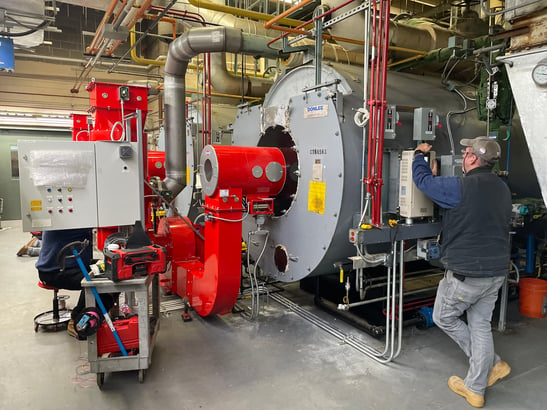What is excess air? It is air that is delivered into the burner flame for safety purposes and complete combustion.
It is important to control excess air and the amount introduced to the flame. When too much air is introduced, it impacts the incoming flame temperature at the burner tip.
Example:
- At 3% O2, the flame temperature is approximately 3,200°F.
- When the O2 is raised to 7.46%, the incoming flame temperature is reduced by 500°F to 2,720°F.
When this happens, the heat is wasted. It doesn’t have the opportunity to reside in the boiler and transfer into usable heat. Residency time is the amount of time the products of combustion move through the heat exchanger. The lower the excess air, the slower they move and more of the heat is absorbed rather than going up the chimney.
Too much excess air increases the velocity of gases moving through the boiler, further reducing the residency time. In this case, the outgoing stack temperature is artificially lowered and the efficiency level is inaccurate due to flame dilution and the reduction of available heat to transfer inside the boiler.

Example (provided by Limpsfield):
- Burner A (30 MMBTU/hr) operating at 3% O2 = 15% excess air
- Burner B (30 MMBTU/hr) operating at 6% O2 = 35% excess air
At 30 MMBTU/hr this corresponds to 43650 cuft/hr of air not being used in the combustion process for Burner A as opposed to 101850 cuft/hr for Burner B. If both burners have the stack temperature of 300°F, this gives us the following inputs:
For Burner A: 43650 cuft/hr excess air required
For Burner B: 101850 cuft/hr excess air required
Therefore: Burner A uses 183,053 BTU/hr to heat excess air
Burner B uses 427,124 BTU/hr to heat excess air
So even if the burners both burn their fuel completely, Burner A will need less fuel input to achieve the required output than Burner B because of the lower losses involved in heating the excess air.
Learn more about how you can reduce excess air with an efficient burner from Limpsfield.

